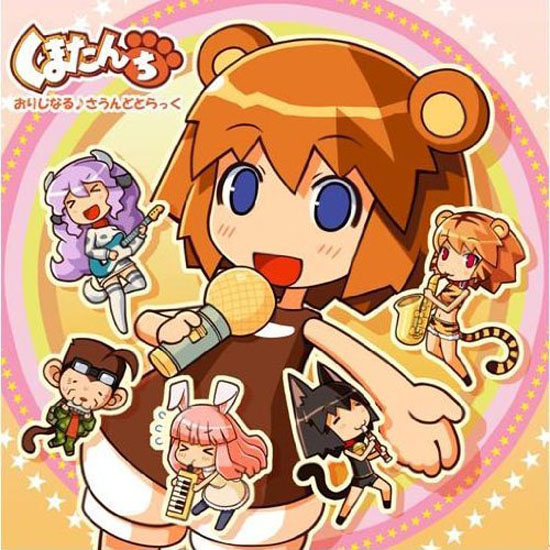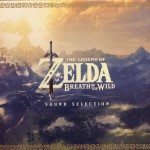While most people jumped on the Murasmasa soundtrack as a source of excitement at the announcement of Basiscape’s in-house record label, Basiscape Records, their debut release (BSPE-1001) is actually the Kumatanchi soundtrack for the DS. You’re probably with me in having no idea what this is (it was only released in Japan as far as I know), but it’s a Vanillaware title whose soundtrack you’ll definitely want to avoid judging by its cover (or its first track for that matter).
What’s here is an hour of music by Kimihiro Abe and Mitsuhiro Kaneda that is playful, quirky, and whimsical. It has a distinctly “gamey” sound with moments that will have you thinking of Secret of Mana, and others that will remind you of Basiscape’s own amazing score for Opoona. In fact, based on the style of music featured on the Kumatanchi soundtrack, I get the feeling that Abe and Kaneda were likely responsible for some of my favorite tracks from Opoona.
Find out what I mean, and if the Kumatanchi soundtrack is worth your time in our review of Basiscape Records’ first album release after the jump.
So, about not judging books by their covers. The opening track, “Come Over to Kumatan’s Zoo” will send most people running with its screechy, cutesy Japanese vocals. Yes, you know the ones I’m talking about! They’re terrible. The musical backing, on the other hand, is super upbeat and fast-paced, and is overall quite good with heavily reverberating strings that create a spacey sound, sounding like Opoona on crack.
Fortunately things get better from here on out.
“Kumatanchi ~ Main Theme ~” is mellow in contrast to the previous track. It plods along somewhat lazily with woodwinds and accordion voicing a smooth jazz melody. Triangles and toy percussion add to the playfulness of the track. Other tracks, like “The Encounter With Kumatan” and “At Nighttime Outdoors “ take the same laid back approach, with the former coming as a slow waltz, and the latter featuring some awesome sidestick and hi-hat percussion along with a whimsical woodwind melody. There are even a few minimalistic lullaby-esque tracks, including “Kumatan’s Album” with rich belltones and shaker percussion.
Want weird? Perhaps you’d expect it based on the album cover above. “Kumatan” is a zany track with marimba and this “buzzy” brass-sounding instrument that screams “desert” to me. I suppose the marimba would suggest a tropical setting, but who knows. This one is wacky to say the least, but still fun. “Nekokun,” on the other hand, gets its funk on with a swanky jazz organ and a grungy piano accompanied by this distorted, high-pitched synth sample that sounds like a dirty electronic flute (saying “dirty electronic flute” makes me laugh for some reason). Finally, both “Sister Ushi” and “Magurosan” feature these amateur sounding performances with wonky brass and simple, almost minimalistic progressions that sound like kids trying to put together a performance. They come off as rather comical, and I found myself enjoying them a lot.
“At Daytime Outdoors” is one of my favorite tracks on the album with its groovy slap bass, jazzy piano chords, amazing woodwind buildups, and of course, a super-positive xylophone melody. I’d describe it as sticky sweet smooth jazz. Similar to the “day” and “night” variations from Sonic Unleashed, Kumatanchi takes the same approach with this track, and just like Sonic Unleashed, the daytime theme triumphs over the nighttime variation I described above. Another great track is “Sumomosan,” which uses electronic percussion, deep electric piano chords, some more groovy bass, and a mixed xylophone and synthesized accordion melody that is incredibly catchy.
After a large block of jingles and short ditties that you’ll likely want to skip, it’s finally on to the final stretch. These tracks admittedly have a more serious tone, starting with the contemplative “Farewell to Kumatan” that uses mainly strings and belltones to voice an almost epic melody. The next track, “Kumatan’s Letter” features only orgel and some rhythmic bongos, creating a dreamy atmosphere that makes it seem as though everything prior to this was just a dream. “Will Be With You” opens with a warm and beautiful and string section before a flurry of instruments burst forth, reinforcing the upbeat style found elsewhere on the album. Pizzicato strings, accordions, and tambourines are all very happy instruments, and you’ll find them all here!
The final track on the album, “Happy Sugar Days ~ Full Version ~” marks the return of vocalist Ryouki Ruou, and she fortunately won’t make your ears bleed this time around. This one is a funky marriage between spacey electronic music and pop that is both upbeat and thoughtful at the same time. It’s a really great track, and a great way to cap off a fun first release from Basiscape Records
The album itself sports a lot of colorful (and great looking) artwork, which should be no surprise as it’s a Vanillaware game. There are profiles for both Abe and Kaneda (in Japanese), and overall, this album gives off a warm vibe with its happy score and vibrant presentation. It’s a fun release that I would have never expected from Basiscape, and a great way to kick off Basiscape Records. I highly recommend checking it out, even if you have no idea what Kumatanchi is all about.
Are you excited about the debut of Basiscape Records? Will you be looking into Abe and Kaneda’s score for Kumatanchi?
Tags: Basiscape, Basiscape Records, Kimihiro Abe, Mitsuhiro Kaneda, Music Reviews, Reviews, Vanillaware









































Nice review, Jason. I don’t buy it yet but you encourage me. One thing though, the track title you used basically suck, as translated by me! If you have time, please don’t hesitate to share information (composer breakdown) or correct the translations.